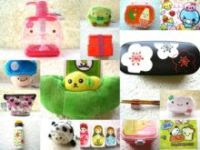Showing posts with label germany. Show all posts
Showing posts with label germany. Show all posts
Tuesday, December 13, 2011
Christmas - More Trivia - Decorations
Labels:
Christmas,
christmas decorations,
christmas trivia,
germany,
lauscha,
nuremburg,
ornaments,
woolworth
Monday, December 12, 2011
Santa -The Actual Gift Givers Are Different In Various Countries
- England: Father Christmas
- France: Pere Noel (Father Christmas)
- Germany: Christkind (angelic messenger from Jesus) She is a beautiful fair haired girl with a shining crown of candles.
- Holland: St Nicholas.
- Italy: La Befana (a kindly old witch)
- Spain and South America: The Three Kings
- Russia: In some parts - Babouschka (a grandmotherly figure) in other parts it is Grandfather Frost.
- Scandinavia: a variety of Christmas gnomes. One is called Julenisse and of course
- United States: Santa Claus
Labels:
christkind,
Christmas,
christmas gifts,
England,
father christmas,
france,
germany,
holland,
Italy,
santa
Tuesday, November 29, 2011
Okay Get Your Cocoa Warm Up There Is More... Queen Victoria
Christmas trees are known to have been popular in Germany as far back as the sixteenth century. In England, they became popular after Queen Victoria's husband Albert, who came from Germany, made a tree part of the celebrations at Windsor Castle. In the United States, the earliest known mention of a Christmas tree is in the diary of a German who settled in Pennsylvania
Cultured Christmas trees must be shaped as they grow to produce fuller foliage. To slow the upward growth and to encourage branching, they are hand-clipped in each spring. Trees grown in the wild have sparser branches, and are known in the industry as "Charlie Brown" trees.
During the ancient 12-day Christmas celebration, the log burned was called the "Yule log." Sometimes a piece of the Yule log would be kept to kindle the fire the following winter, to ensure that the good luck carried on from year to year. The Yule log custom was handed down from the Druids
During World War II it was necessary for Americans to mail Christmas gifts early for the troops in Europe to receive them in time. Merchants joined in the effort to remind the public to shop and mail early and the protracted shopping season was born
Electric Christmas tree lights were first used in 1895. The idea for using electric Christmas lights came from an American, Ralph E. Morris. The new lights proved safer than the traditional candles.
Labels:
christmas lights,
cocoa,
druids,
England,
germany,
queen victoria,
sexteenth century,
yule log
Subscribe to:
Posts (Atom)







